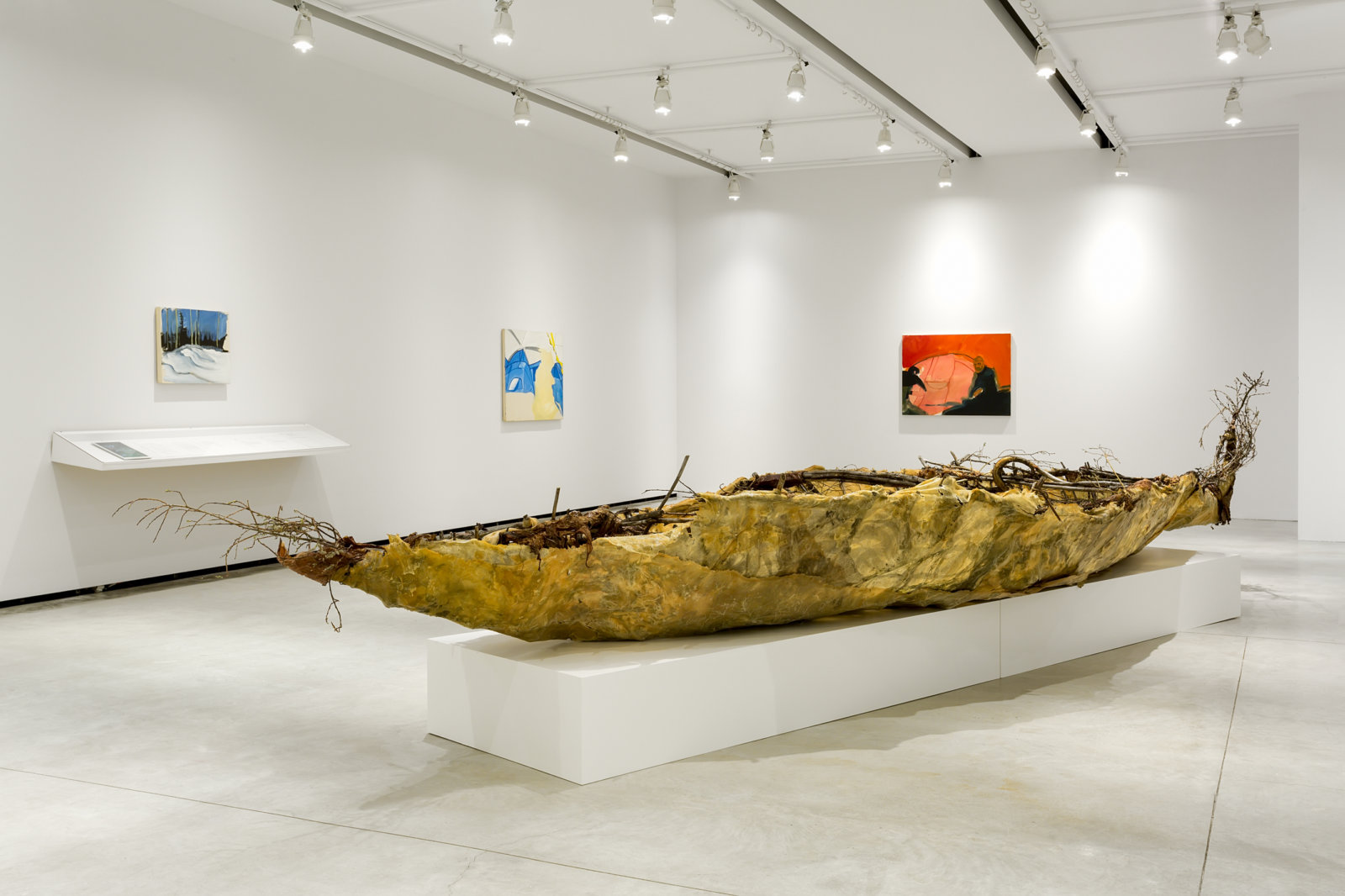Brenda Draney – Draney, Maps and Dreams, JUNE 1–JULY 29, 2017
Brenda Draney
Maps and Dreams
June 1–July 29, 2017
SFU Audain Gallery, Vancouver, Canada
Maps and Dreams is a group exhibition of work by contemporary artists that explores conceptions and implications of land use through cultural and industrial lenses. The exhibition specifically considers the territory of the Dane-zaa people of northeastern British Columbia, now in Treaty 8. Borrowing the title from Hugh Brody's book Maps and Dreams, a 1981 anthropological study of the Dane-zaa, the exhibition includes work by artists who consider how this land and its intersection with human use is articulated, represented and contested.
Treaty 8 is an 1899 agreement (one of eleven treaties) between Queen Victoria / Government of Canada and various First Nations of the Lesser Slave Lake area. It covers 840,000 square kilometers and includes northeastern British Columbia, northern Alberta, northwestern Saskatchewan, and the southern portion of the Northwest Territories. The region - largely boreal forest or grassland steppe, now used for agriculture - is both a geopolitical and ecological zone where a large portion of Canada's largest revenue is generated by oil and gas industries.
Brody's Maps and Dreams charts the Dane-zaa's hunting, trapping and ceremonial territories to give voice to and defend an ongoing and vibrant Dane-zaa traditional economy against expansionist colonial plans. Contrary to the expansionist dreams of settler culture, where land is seen as a resource to be used (up), Dane-zaa stories speak to an intimate and reciprocal knowledge of land that is not separate from human or animal existence. Dane-zaa mapping and dreaming holds a spatial and sacred understanding of the land where visions are drawn onto hides as dream maps. Rarely seen, these maps are keys to Dane-zaa memory, land use, spirituality, and survival.
For this exhibition, Maps and Dreams and Treaty 8 offer a set of cultural, historical, environmental and political markers in which the participating artists' works are located.
The works connect the personal to the regional context through photographs, paintings, installation and conceptual documents that take up land-based kinship, the labour of land development, surface rights, and ethereal spaces of beauty and reciprocity. The artists present Indigenous and settler perspectives, take up forms of literal and figurative mapping, and through diverse strategies and speculative inquiries, engage with a complex entanglement between multi-faceted dreams and the land.
Curated by Brian Jungen and Melanie O'Brian.
Documentation by Blaine Campbell.










